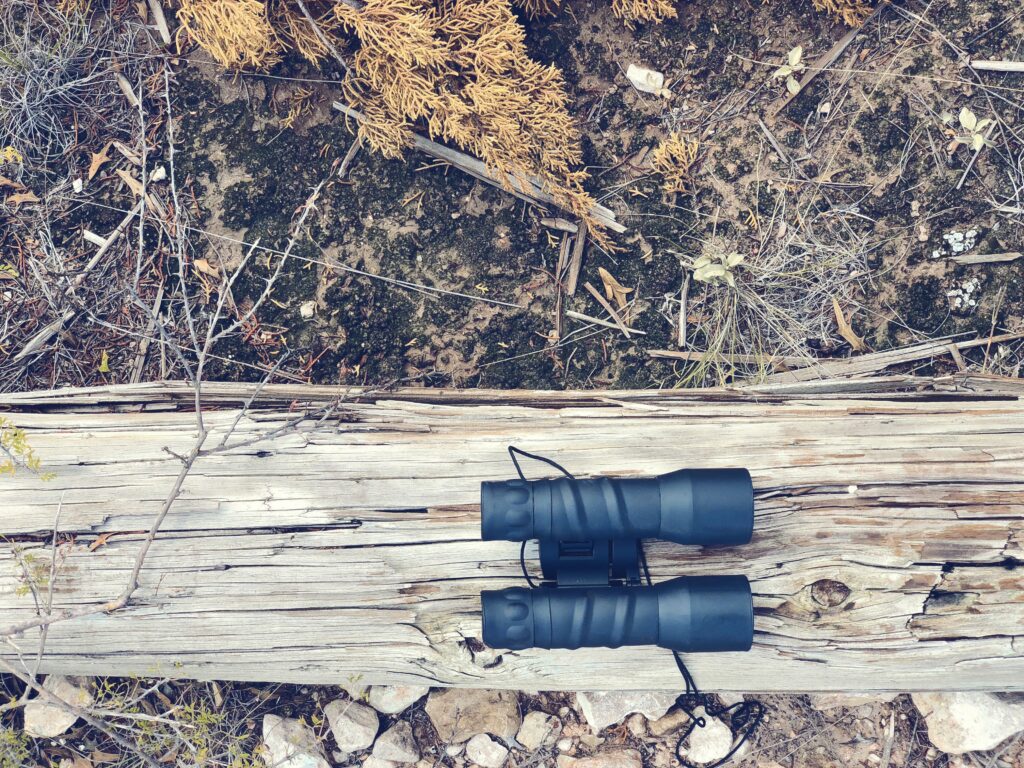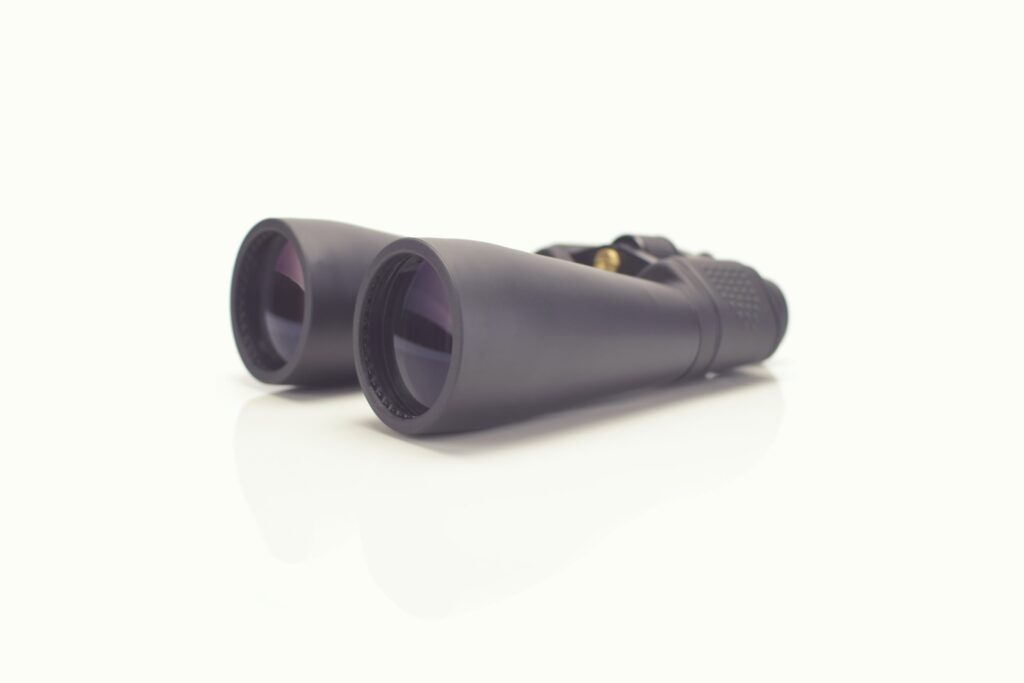Table of Contents
How To Choose Binoculars For Your Outdoor Needs
Given that binoculars are intended to provide clarity to your outdoor experiences, it’s astonishing how perplexing things can become when deciding which are the best binoculars for the money.
Going to a store and looking through many pairs of binoculars before making a final decision is a good approach to evaluate optical performance and simplicity of usage.
However if you’re shopping online, read this step-by-step guide to buying binoculars so you know the crucial points to consider while selecting the best binoculars for your outdoor and travel needs.
How to Buy Binoculars (Step-By-Step-Guide)
What do the numbers on binoculars actually mean?
Binocular model numbers mainly describe their strength (magnification power) and size (objective lens diameter). For example, with 10×28 binoculars, “10” represents the magnification power and “28” represents the diameter (in millimetres) of the objective lenses (the lenses closest to the thing you’re looking at).
The objective lens size tells you how big the binoculars are physically and how much light they can capture. When you understand what these numbers imply and how they effect your sight, you’ll be able to decide if you want binoculars suitable for birdwatching, astronomy, or for example, utilising while travelling on a moving vehicle or boat.
Why are binoculars with similar spec vary in price?
It is the the quality of the components within. Sophisticated optics are one significant reason why you can spend hundreds more on seemingly identical binoculars. An important consideration when choosing the best binoculars for the money
What features are useful to consider when buying binoculars?
Protective components include the rubber covering, waterproof construction and fog-proof lenses. These may be worth upgrading depending on your planned use and budget.
Specific uses
If you need binoculars for a certain main purpose, such as bird watching, boating or astronomy, or simply compact for travel, the following guide might enable you to narrow your choices. Magnification and overall size are the useful to start with, but optics and characteristics should also influence your selection.
- Binoculars for travel, backpacking and hiking: Because pack space and weight are important considerations while travelling or backpacking, small binoculars with magnifications of 8 or 10 and an objective lens diameter of less than 28mm are ideal (8×25, 10×25, 8×28 and 10×28 are all good choices). A pair with a rubberised coating is more robust and waterproof versions assist when met with adverse weather. Shop Compact Binoculars on Amazon
- Binoculars for sailing, SUP and on the water: If you’re heading out on the water for sports such as in a canoe, kayak, SUP, or sailing boat, a lower magnification, such as 7x or 8x, may be preferable than a greater (10 times) magnification, which can make steady viewing difficult. For obvious reasons, choosing a waterproof model is also a smart option. A common size is 8×32. Additionally specific sailing models can include in-built compass that can be viewed through the lens to assist with navigation. Shop Waterproof Binoculars on Amazon
- Binoculars for bird watching: You may look at medium and larger versions if size and weight aren’t as important to you (8×32 and 8×42 binoculars are popular with bird watchers and hunters). While a 10 times magnification may appear to be useful when gazing at a small animals, an otherwise similar pair of binoculars with an 8 times magnification will offer a larger field of view, which is important for spotting birds. Water resistance is another plus, as are those that have anti fog coating for when you go into cold environments. Shop Bird Watching Binoculars on Amazon
- Binoculars for dolphin watching and wildlife safaris: 8×32, 8×42, 10×32, and 10×42 are popular models for animal viewing at a distance. When you’re going to be far away from the animals, choose a greater magnification (10 instead of 8) lens. If you want something a little more compact, go for a midsize (32mm objective lens) rather than a full-size (42mm objective lens). Water resistance is also good; however, if you’re going dolphin or whale watching from a boat rather than the shore, opt for totally waterproof versions. Shop Wildlife Binoculars on Amazon
- Binoculars for stargazing: When viewing the night sky you want to increase your magnifying capacity to collect light so full-size binoculars are helpful. Consider 10×42 or 10×50 sizes and choose higher magnification. Consider a tripod to keep the binoculars stable while viewing. Shop Stargazing Binoculars on Amazon, Shop Binocular Tripods on Amazon
- Binoculars for kids: Due to smaller hands, compact binoculars are more suitable for children. Similarly to travel and hiking, an objective lens diameter of less than 28mm is ideal. A pair with a rubberised coating and shockproof will be more robust and easier to grip. Children’s varieties can also be found in a variety of colours to make them even more fun. Shop Kids Binoculars on Amazon
Binocular Specs
Size of the binoculars
For convenience, binoculars are classified according to their target lenses in small, medium and large categories (the second number in model names). Note, however, that changes in optics, construction and design might nevertheless lead to different sizes and weights of models that have the same size objective lenses.
- Compact: Objective lens size is less than 30mm (e.g. 8×25, 10×28)
- Midsize: Objective lens size is from 30mm to 40mm (e.g. 10×30, 8×32)
- Full-size: Objective lens size is greater than 40mm (e.g. 8×42, 10×50)
If the binoculars are to go into your backpack, then small lightweight versions have meaning. Medium size models might provide you better pictures and be easier to manage for lengthy durations. This may alter with bigger, full-size binoculars, which can be too large to handle for some over longer periods.
Magnification
The most common magnifications are 8 and 10 times, however you can also purchase models with lower or greater magnifications.
- 8 times magnification: Offers a wider field of view
- 10 times magnification: Offers a closer, more detailed view
The magnification of an 8×25, 8×32, or 8×42 pair of binoculars is the same: an object seems 8 times closer than it would to your unaided eye.
While it may seem that higher magnification yields better viewing, this is not always the case. Binoculars with magnification capabilities greater than 10 make stable viewing difficult due to the amplified movement of your hands, therefore they are a terrible choice if you will be on a boat or other moving platform.
Field of View
Magnification power has an impact on your field of view as well. Lower magnification expands your field of view while higher magnification narrows it.
When looking far away, a reduced field of view might make it more difficult to identify tiny and/or moving objects (such as birds and small animals). Also b ecause of the narrower field of vision, less light enters the picture, making it slightly darker.
Because other elements, such as eyepiece design, also have a role, the “field of view” spec is the one you look at to obtain the most accurate idea. This specification specifies the diameter of the area visible at a glance from 1,000 yards away.
Objective Lens Diameter
The diameter of your binoculars’ objective lenses determines how much light they can collect. When comparing two pairs of binoculars with identical specs, the pair with bigger objective lenses will catch more light, resulting in a brighter image.
Images will also generally be brighter with binoculars with higher-quality lenses.
Exit Pupil
A greater number indicates that the pictures are brighter. In low-light circumstances, a higher number implies better seeing, and it will be easier to keep a full image of an item if your hands move or tremble.
The diameter of the objective lenses is divided by the magnification number to determine the size of the exit pupil. 42 divided by 8 equals a 5.25mm exit pupil diameter for 8×42 binoculars.
It refers to the size of the light shaft that reaches your eyes. Pupils range from approximately 2mm in strong light to 7mm in complete darkness.
An exit pupil of 5mm or greater is recommended for low-light situations: Having a high exit pupil number might make vision easier at dawn, dusk, or when there is extensive tree cover.
Exit pupil size is less significant for bright daylight vision because virtually all binoculars have exit pupils larger than 2mm.
Eye Relief
The distance between an eyepiece and your eye when the entire field of view is visible is known as eye relief. If you wear glasses, this is an important point to take note of.
The eyepieces of most binoculars are adjustable, allowing you to set them to their maximum eye relief value (the stated spec). Shortening the eyepieces is generally accomplished by rolling down rubber eyecups or twisting a eyepiece.
Shop Binoculars on Amazon
The Optics of Binoculars
Coatings and Lens Materials
This is when sophisticated technologies enter the picture. The quality and clarity of your image are determined by the composition of the glass and the anti-reflection coatings on the lenses.
This is when test watching comes in handy. This will inform you how far your eyes can notice improvements and, as a result, how much more you should contemplate paying for the visual quality you desire.
Type of Prism
The optical components that guide light from the scene through the binoculars to your eyes are known as prisms. The front barrels of older “porro prism” binoculars are large and not aligned with the eyepieces.
Eyepieces and objective lenses are aligned in newer “roof prism” versions. Although the change in appearance has no bearing on optical quality, roof prisms allow binoculars to be smaller and lighter.
Shop Binoculars on Amazon
Protective Features
Waterproof binoculars
You’ll want to opt for waterproof or weather-resistant binoculars if you’ll be using them in a kayak, on a sailboat, SUP, or on a hike in the rain. Also keep in mind that, despite the fact that there is a difference, manufacturers frequently refer to any amount of water resistance as “waterproof.”
O-rings are commonly used to keep moisture out of waterproof binoculars. They can withstand a splashdown but not prolonged submersion (most binoculars aren’t waterproof).
Binoculars that are weather-resistant or water-resistant are not completely waterproof. They can withstand light rain, but not a downpour or a drop in a river.
Rubberised coating
While a rubber surface will not give full-scale crash protection, it will aid to protect against small bumps and bruises. It’s a useful feature for any binoculars that will be utilised in harsh outdoor conditions.
Binoculars that don’t fog up
When you shift from a cold to a warm location, binoculars might fog up. Not only is this inconvenient, but it can also be harmful to the binoculars if moisture becomes trapped within them.
Binocular manufacturers purge the air within the binoculars and replace it with nitrogen, which has no moisture content and so does not condense. This just protects the interior lens surfaces from fogging, not the external ones.
Shop Binoculars on Amazon
Focus With Your Binoculars
A central control on most binoculars generally focuses both barrels at the same time. Some also have a “diopter” adjustment ring that allows you to focus one barrel separately, allowing you to compensate for visual variances between your eyes.
If you wear glasses, you can roll or twist the eyecups all the way down before you start looking through them.
To focus a pair of binoculars, follow these steps:
- Cover the right* lens with a cover and use the center control to firmly focus on a faraway object.
- Switch the cap to the left* lens and use the diopter adjustment to sharply focus on the same object.
- You’re done; just leave the diopter alone and concentrate using the center control.
Choosing Your Binoculars
When testing out the best binoculars for the money, pay special attention to the image’s overall sharpness and brightness, as well as the consistency of clarity and brightness in your field of view. When buying online consider how you will use them and compare the appropriate spec from the guide above to narrow down your choice.
- Binoculars for travel, backpacking and hiking: Shop Compact Binoculars on Amazon
- Binoculars for sailing, SUP and on the water: Shop Waterproof Binoculars on Amazon
- Binoculars for bird watching: Shop Bird Watching Binoculars on Amazon
- Binoculars for dolphin watching and wildlife safaris: Shop Wildlife Binoculars on Amazon
- Binoculars for stargazing: Shop Stargazing Binoculars on Amazon, Shop Binocular Tripods on Amazon
- Binoculars for kids: Shop Kids Binoculars on Amazon
For more on outdoor gear check out Best Affordable Waterproof Fitness Trackers For Outdoor Sports






Recent Comments